How Self-Service Solutions Empower Customers and Optimize Business Operations
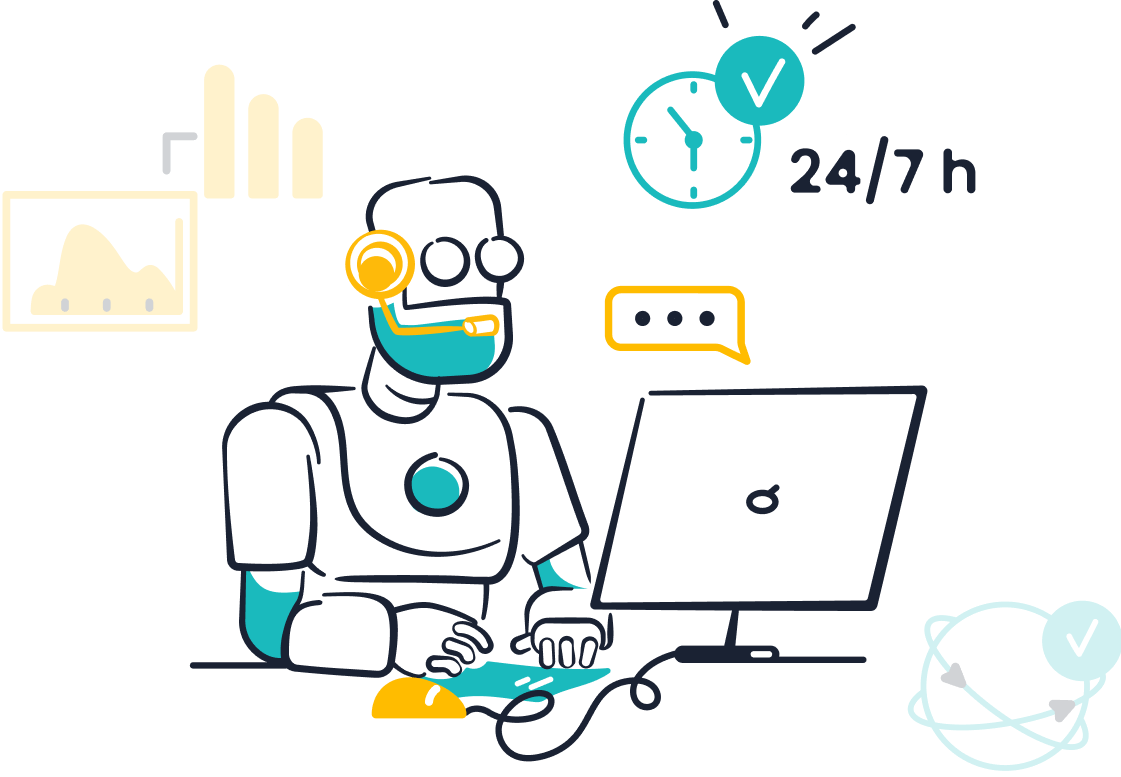
Self-service solutions are reshaping how businesses operate and how you, as a customer, interact with them. Did you know 67% of customers prefer solving issues independently rather than contacting support? This shift isn't just about convenience; it’s about empowerment. Businesses, too, are reaping the rewards. For instance, digital self-service cuts support costs by up to 75%. Tools like Sobot’s AI Chatbot enhance your experience by providing 24/7 support, boosting satisfaction. With 95% of companies noticing a rise in self-service requests, it's clear this trend is here to stay, benefiting everyone involved.
Understanding Self-Service Solutions
What Are Self-Service Solutions?
Self-service solutions let you take control of your interactions with businesses. Instead of waiting for a representative, you can resolve issues, find information, or complete transactions on your own. Whether it’s using a chatbot to answer questions or accessing a knowledge base for troubleshooting, self-service empowers you to get things done faster and more efficiently.
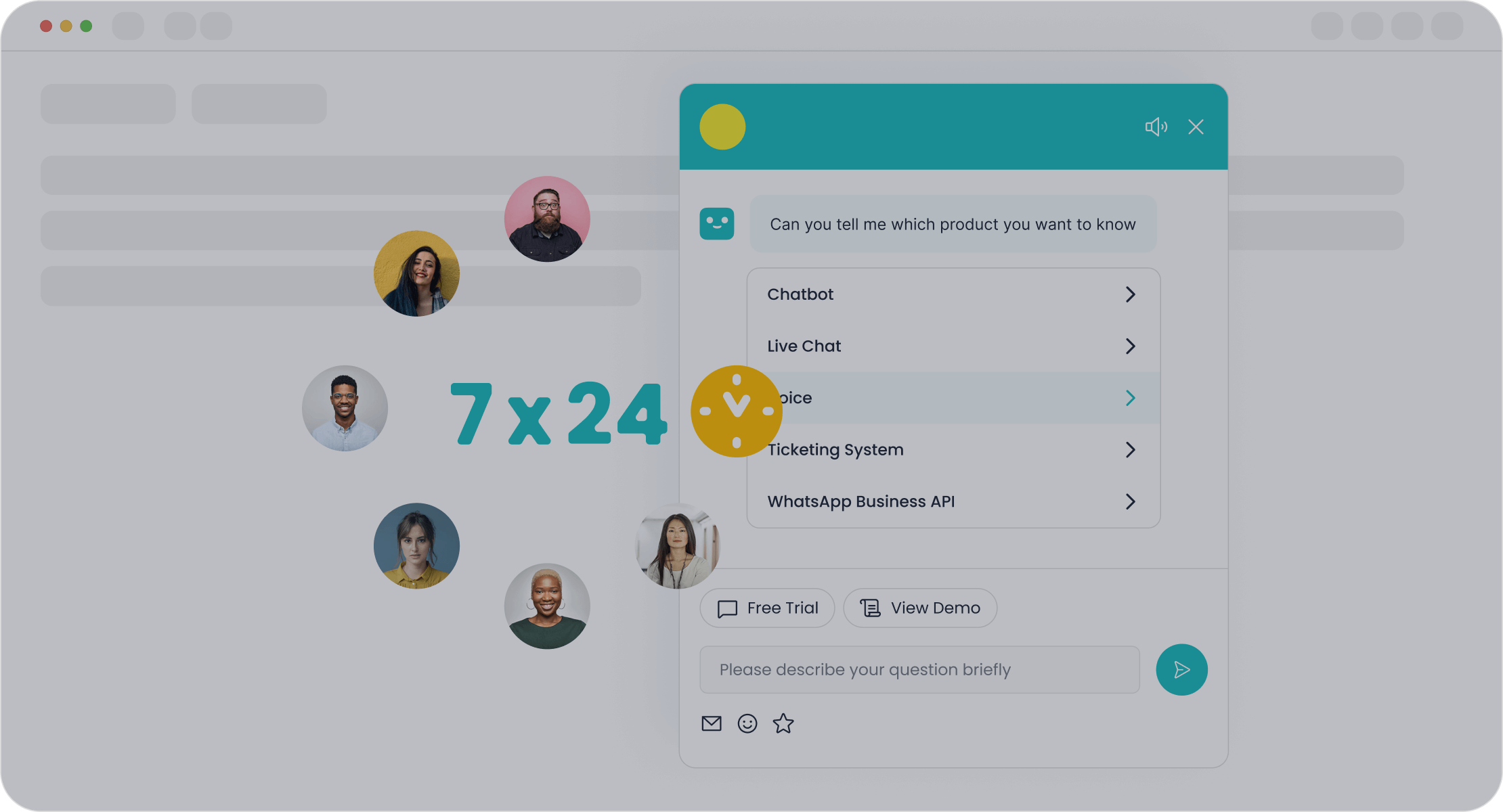
This model isn’t just about convenience—it’s about creating a seamless experience. For example, Sobot’s AI Chatbot offers 24/7 support, helping you solve problems anytime, anywhere. With 81% of customers attempting self-service before contacting live support, it’s clear that this approach aligns with what you want: independence and speed.
Key Components of Self-Service Solutions
Effective self-service solutions rely on a few key elements:
- User-Friendly Interfaces: Tools like self-service portals and chatbots must be intuitive. If it’s hard to navigate, you’re less likely to use it.
- Comprehensive Knowledge Bases: These provide detailed answers to common questions, saving you time and effort.

- Omnichannel Integration: You should be able to switch between channels—like email, chat, or social media—without losing context. Sobot’s omnichannel solution excels here, ensuring a smooth experience across platforms.
- Automation and AI: Advanced technologies handle repetitive tasks, freeing up human agents for complex issues. This not only improves efficiency but also enhances your overall experience.
| Key Findings | Implications for Self-Service Solutions |
|---|---|
| Market differentiation leads to personalized solutions | Enhances customer perceived value and performance |
| Innovation in transaction methods relies on technology | Increases convenience and reduces costs for customers |
| Integration of online and offline channels | Breaks down barriers of time and space in transactions |
The Role of Technology in Self-Service
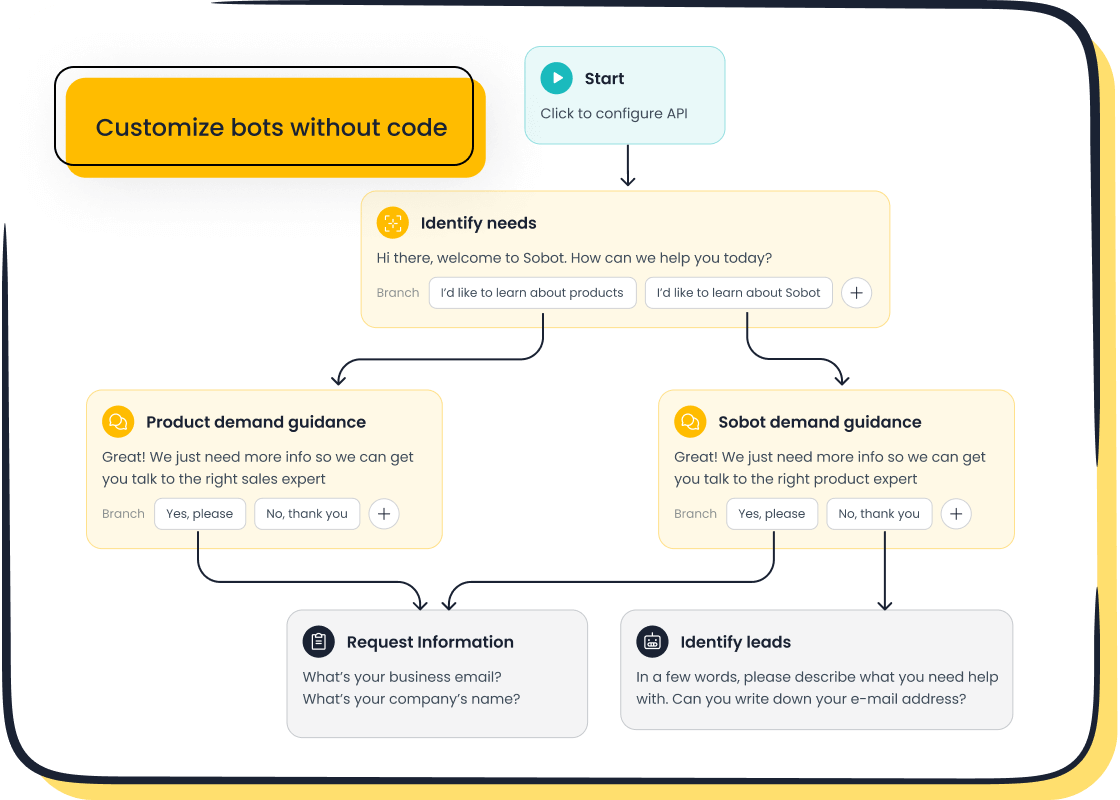
Technology is the backbone of modern self-service. AI, automation, and machine learning make it possible for tools like chatbots to understand your needs and provide accurate responses. For instance, Sobot’s AI Chatbot uses a knowledge base built from various sources to deliver instant replies. It’s multilingual, operates 24/7, and doesn’t require coding to set up—making it accessible for businesses and helpful for you.
Statistics show how much technology has transformed self-service. Did you know 60% of customers prefer self-service tools for simple tasks? Or that 45% of businesses see a boost in customer satisfaction after adopting these tools? These numbers highlight why companies are investing in digital self-service options to meet your expectations.
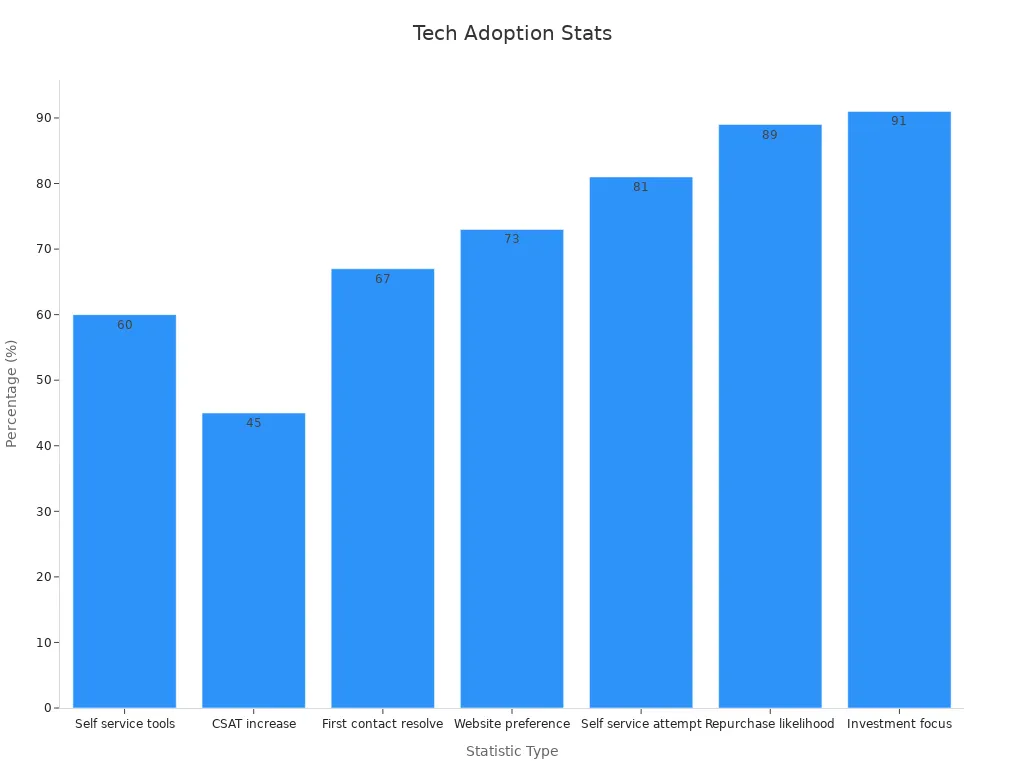
By integrating advanced tools, businesses not only save costs but also improve your experience. Whether it’s through chatbots, self-service portals, or interactive voice response systems, technology ensures you get the help you need—quickly and effectively.
Benefits of Customer Self-Service
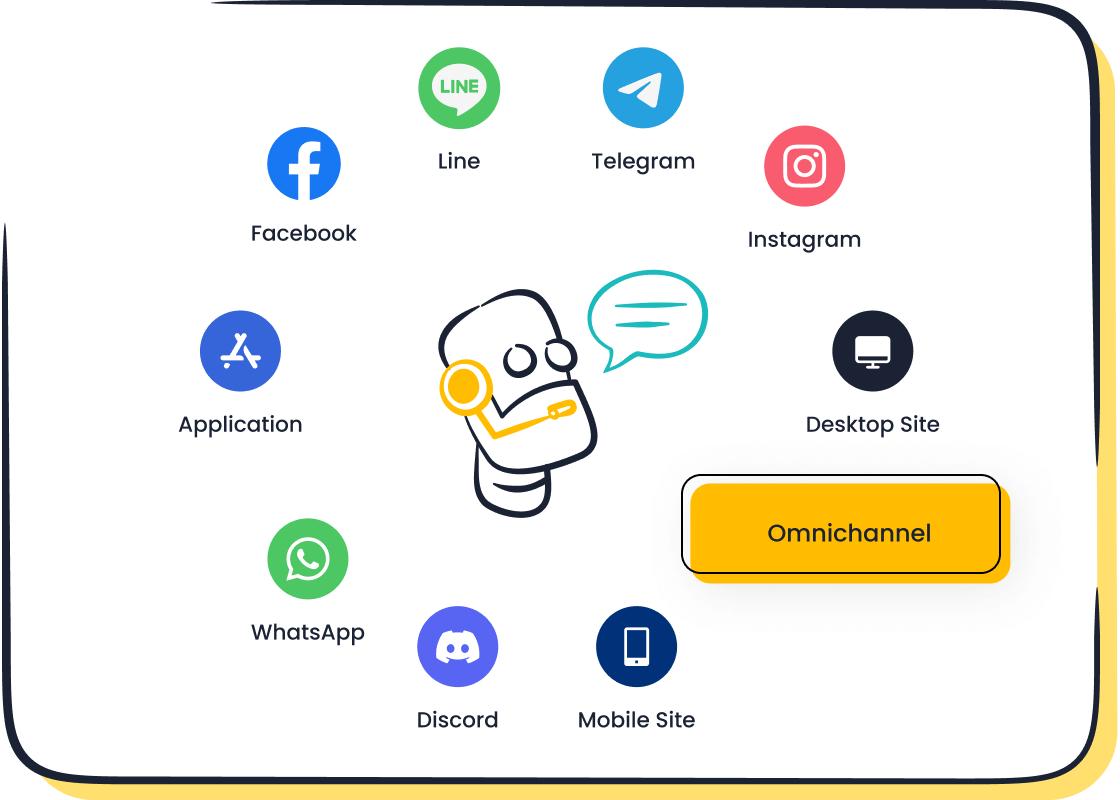
Convenience and Accessibility for Customers
Imagine being able to solve your issues anytime, anywhere. That’s the beauty of self-service solutions. They offer continuous accessibility, meaning you don’t have to wait for business hours or stand in long queues. Whether it’s midnight or a busy afternoon, you can access a self-service portal to find answers or complete tasks. This level of convenience is unmatched.
For example, Sobot’s AI Chatbot operates 24/7, ensuring you always have instant access to support. It’s like having a personal assistant ready to help you at any moment. This enhanced customer convenience not only saves time but also makes your experience smoother and more enjoyable.
Here’s a quick look at why self-service is so effective:
| Benefit | Description |
|---|---|
| 24/7 Availability | Self-service solutions are accessible around the clock, allowing customers to resolve issues anytime. |
| Instant Access | Customers can get immediate answers for simpler issues, enhancing convenience. |
| Increased Customer Satisfaction | Easy problem resolution leads to positive perceptions and greater loyalty. |
| Reduced Customer Frustration | Customers feel empowered and less frustrated when they can find information independently. |
By offering this level of accessibility, businesses can meet your expectations while improving the overall customer experience.
Faster Resolutions Through Self-Service Portals
Nobody likes waiting, especially when you need help. Self-service portals are designed to provide faster resolution for your problems. Instead of waiting on hold or navigating through complex customer service systems, you can quickly find what you need. These portals often include features like FAQs, knowledge bases, and AI-powered chatbots that deliver instant answers.
Take Sobot’s self-service portal as an example. It integrates advanced AI to handle repetitive queries, giving you faster resolution without involving a human agent. This not only saves time but also ensures you get accurate information tailored to your needs. In fact, 81% of consumers prefer using online knowledge bases for quick problem-solving.
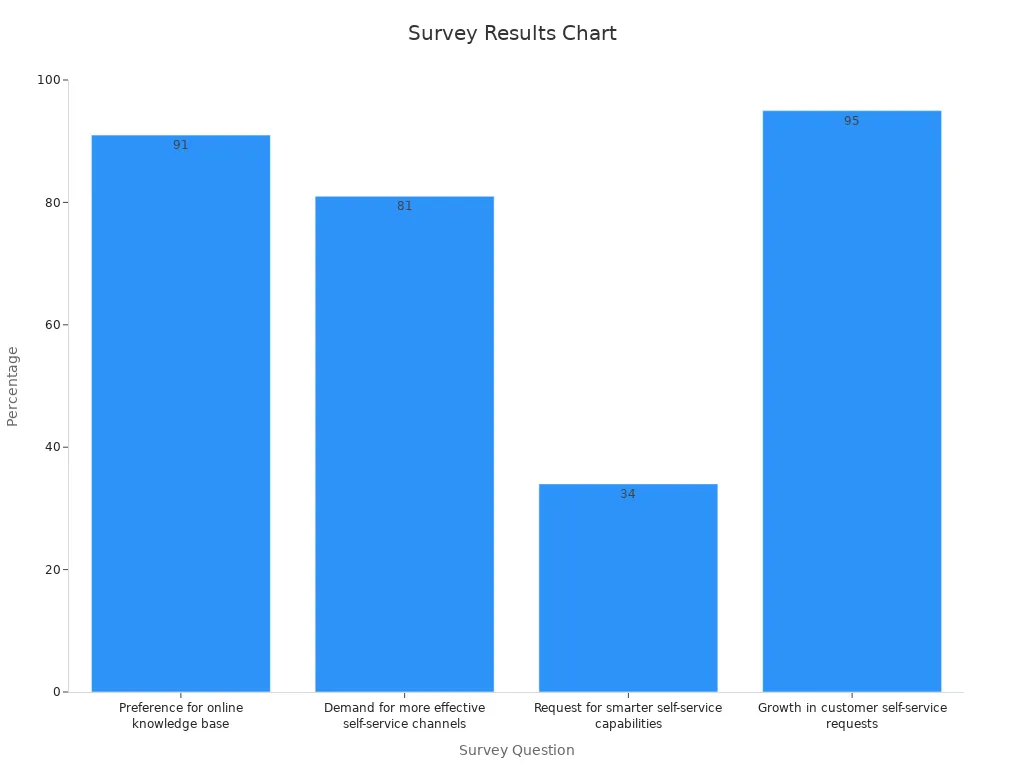
When businesses implement these tools, they also benefit. Self-service portals reduce the workload on support teams, allowing them to focus on more complex issues. This creates a win-win situation where you get faster help, and businesses improve their efficiency.
Empowering Customers with Independence
Self-service isn’t just about solving problems—it’s about empowering you. When you can find answers or complete tasks on your own, you feel more in control. This independence enhances your confidence and creates a positive experience. It’s no wonder 95% of companies have seen a rise in customer self-service requests.
Sobot’s AI Chatbot is a great example of how technology empowers customers. It’s multilingual, easy to use, and doesn’t require any coding to set up. Whether you’re managing your account or troubleshooting an issue, the chatbot guides you every step of the way. This level of personalisation ensures you feel valued and supported.
Here’s what customers are asking for:
- 81% want more self-service options.
- 95% of companies reported growth in customer self-service requests.
- 34% are looking for smarter self-service capabilities.
By giving you the tools to help yourself, businesses not only improve your experience but also build stronger relationships. Empowering customers with independence is the future of customer service, and it’s happening now.
Enhancing Customer Satisfaction and Loyalty
When you think about great customer service, what comes to mind? It’s probably quick responses, helpful solutions, and a smooth experience. Self-service solutions check all these boxes, making your interactions with businesses more satisfying and memorable. By giving you the tools to solve problems independently, these solutions don’t just meet your expectations—they exceed them.
One of the biggest ways self-service enhances customer satisfaction is by reducing frustration. Imagine needing help late at night. Instead of waiting until morning, you can use a self-service portal or chatbot to get instant answers. Tools like Sobot’s AI Chatbot are designed to provide this kind of convenience. They operate 24/7, offering real-time assistance whenever you need it. This accessibility ensures you always feel supported, which naturally boosts your satisfaction.
Another key factor is personalisation. You want to feel like a business understands your unique needs, right? Self-service tools make this possible by tailoring solutions to your preferences. For example, Sobot’s omnichannel solution integrates your data across platforms, so you get consistent and personalized support no matter how you reach out. This level of personalisation makes your experience smoother and more enjoyable, leaving a lasting impression.
Did you know that 86% of customers are willing to pay more for a better customer experience? That’s because satisfaction isn’t just about solving problems—it’s about how you feel during the process. Self-service tools create a sense of empowerment, allowing you to take control of your interactions. This independence builds trust and strengthens your loyalty to the brand.
Businesses also benefit from your loyalty. When you’re satisfied, you’re more likely to return and recommend the company to others. Sobot’s solutions, for instance, have helped brands like OPPO achieve a 94% positive feedback rate and a 57% increase in repurchase rates. These numbers show how enhancing customer satisfaction directly impacts loyalty and business growth.
In today’s fast-paced world, your time is valuable. Self-service solutions respect that by making it easier and faster to get the help you need. Whether it’s through a chatbot, a knowledge base, or an interactive portal, these tools ensure your experience is seamless. And when your experience improves, so does your satisfaction and loyalty.
Tip: Look for businesses that offer robust self-service options like Sobot’s AI Chatbot. They’re not just tools—they’re a way to ensure you always have a great customer experience.
Business Advantages of Self-Service Solutions
Cost Savings and Resource Optimization
Self-service solutions aren’t just convenient for customers—they’re a game-changer for businesses like yours. By automating repetitive tasks and empowering customers to solve issues independently, you can significantly cut costs and optimize resources. Imagine reducing the need for additional staff during peak seasons or saving on overtime expenses. That’s exactly what self-service tools deliver.
Take a look at how different industries have benefited:
| Industry | Cost Savings/Improvements | Additional Benefits |
|---|---|---|
| Retail | 22% reduction in scheduling labor costs | 18% decrease in turnover |
| Healthcare | 35% reduction in overtime costs | 40% improvement in shift coverage rates |
| Manufacturing | 15% improvements in schedule adherence | 8% productivity gains |
| Hospitality | 30% reductions in time spent on scheduling | 25% improvements in employee satisfaction |
| Small Business | Significant ROI typically within 3-6 months | N/A |
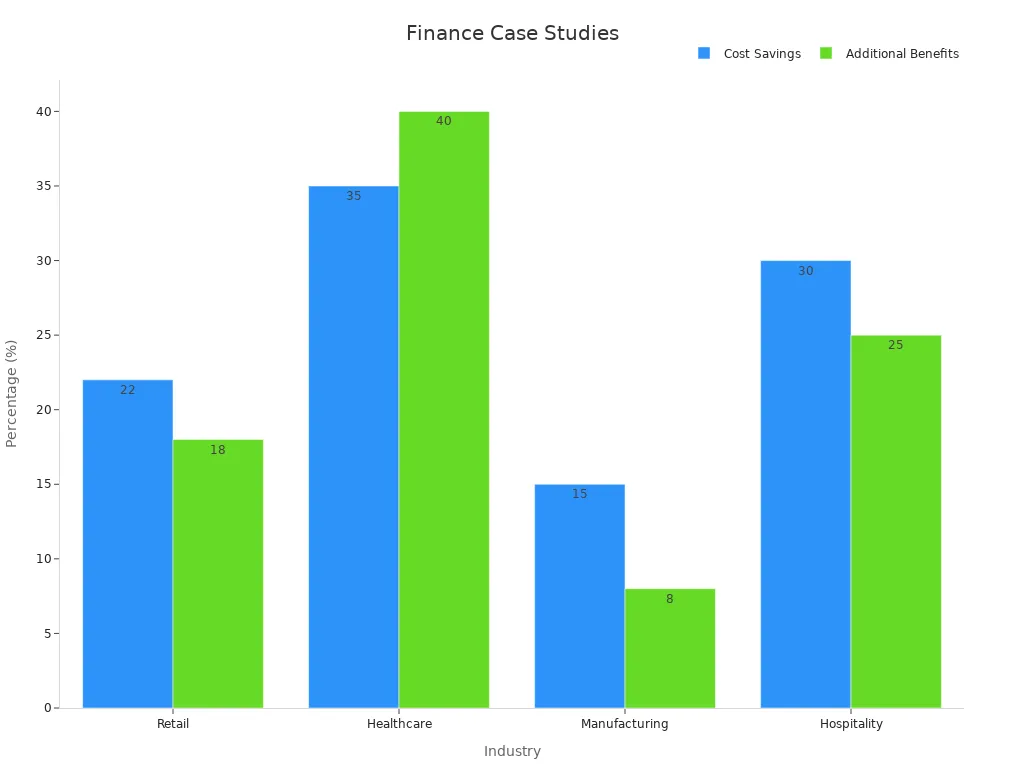
For example, Sobot’s AI Chatbot operates 24/7, handling routine queries without needing human intervention. This reduces agent workload and saves up to 50% on staffing costs. Plus, it boosts productivity by 70%, allowing your team to focus on complex issues that truly require their expertise.
Tip: If you’re looking to optimize resources, self-service tools like Sobot’s chatbot are a smart investment. They don’t just save money—they improve efficiency and customer satisfaction.
Scalability and Operational Efficiency
As your business grows, so do customer demands. Scaling your operations to meet these needs can be challenging, but self-service solutions make it easier. These tools are designed to handle increasing volumes of data and users without sacrificing performance. Whether you’re expanding your customer base or launching new services, self-service systems adapt seamlessly.
Here’s why scalability matters:
- Self-service platforms can accommodate more users without requiring additional staff.
- They operate 24/7, ensuring customers always have access to support.
- Horizontal scaling allows these systems to manage larger data loads efficiently.
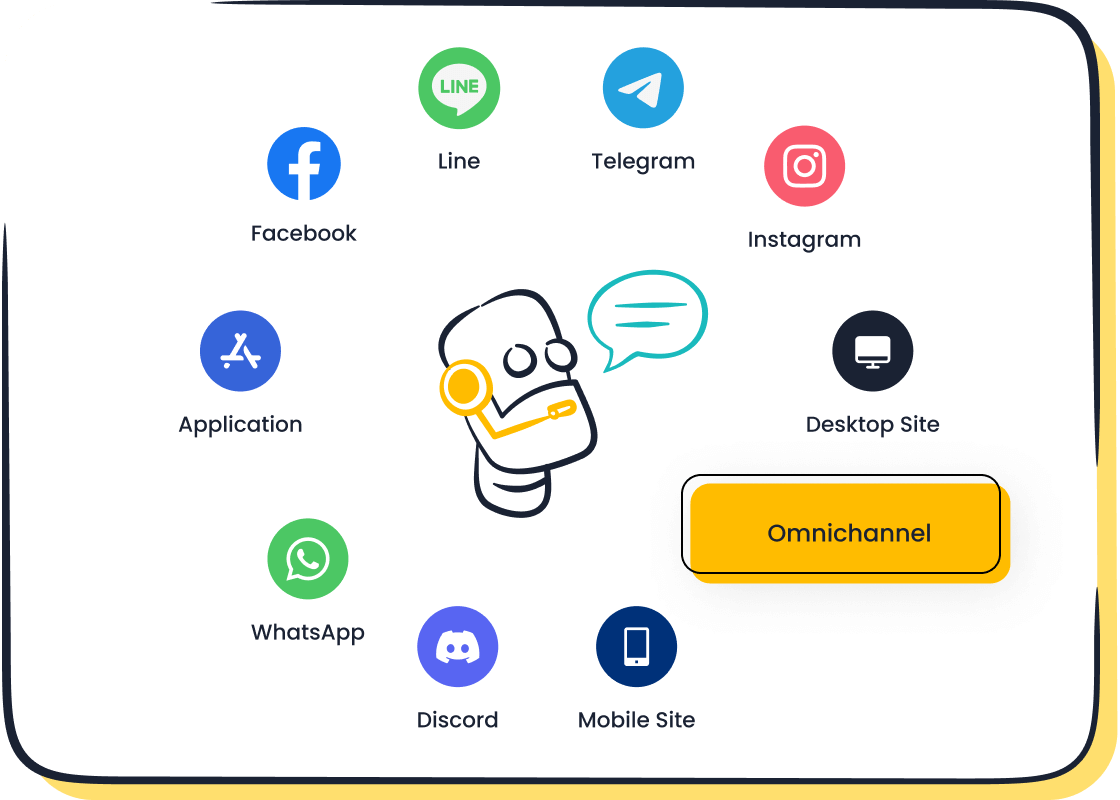
Sobot’s omnichannel solution is a perfect example. It integrates customer interactions across platforms like WhatsApp, email, and live chat, ensuring a consistent experience no matter how customers reach out. This unified approach not only improves efficiency but also supports your business as it grows.
By adopting scalable self-service tools, you can reduce operational costs while maintaining high levels of customer satisfaction. It’s a win-win for both you and your customers.
Strengthening Customer Relationships
Building strong relationships with your customers is essential for long-term success. Self-service solutions play a key role in this by enhancing the customer experience and fostering trust. When customers can solve problems independently, they feel empowered and valued. This independence creates a positive impression and strengthens their loyalty to your brand.
Personalisation is another major advantage. Self-service tools like Sobot’s AI Chatbot use customer data to provide tailored solutions. For instance, the chatbot can guide customers through troubleshooting steps based on their specific needs, making the experience smoother and more engaging.
Did you know that 86% of customers are willing to pay more for a better experience? By offering self-service options, you show that you understand their preferences and respect their time. This builds trust and encourages repeat business.

Sobot’s solutions have already helped brands like OPPO achieve remarkable results. With an 83% chatbot resolution rate and a 94% positive feedback rate, OPPO saw a 57% increase in repurchase rates. These numbers highlight how self-service tools can transform customer relationships and drive business growth.
Note: Strengthening customer relationships isn’t just about solving problems—it’s about creating memorable experiences. Self-service solutions help you do both.
Data Insights for Continuous Improvement
When you think about improving your customer experience, data is your best friend. Self-service tools don’t just help customers solve problems—they also collect valuable insights that businesses can use to refine their operations. Every interaction, whether it’s through a chatbot or a self-service portal, generates data that tells a story. This story helps you understand what works, what doesn’t, and what needs to change.
Self-service analytics foster a culture of feedback. For example, when customers use Sobot’s AI Chatbot, their interactions reveal patterns in frequently asked questions, common pain points, and preferred communication channels. These insights allow businesses to tweak their self-service systems to better meet customer needs. Regular check-ins with employees also ensure they’re comfortable using analytics tools, creating a seamless process for gathering and applying feedback.
Here’s how data analytics validate continuous improvement:
- They help you visualize time-series data to spot trends over time.
- Historical patterns reveal recurring issues, allowing you to address them proactively.
- Alarms for deviations ensure timely corrective actions, preventing small problems from becoming big ones.
Imagine this: A retail company notices through its self-service analytics that customers frequently ask about return policies. By updating its knowledge base and chatbot responses to include detailed return instructions, the company reduces customer frustration and improves satisfaction. This kind of proactive adjustment isn’t just good for customers—it’s great for business.
Sobot’s omnichannel solution takes this a step further. It integrates customer interactions across platforms, giving you a unified view of your data. This makes it easier to identify trends and optimize your customer service strategy. For instance, if you notice that customers prefer using WhatsApp for support, you can allocate more resources to that channel.
Data insights also help you measure the success of your self-service tools. Are customers finding answers quickly? Are they satisfied with the experience? Metrics like resolution rates and feedback scores provide clear answers. OPPO, one of Sobot’s clients, achieved an 83% chatbot resolution rate and a 94% positive feedback rate by leveraging these insights. These numbers show how data-driven decisions can transform customer satisfaction and loyalty.
Tip: Use self-service analytics to continuously refine your customer service approach. The more you understand your customers, the better you can serve them.
In the end, data isn’t just about numbers—it’s about understanding your customers and improving their experience. Self-service tools like Sobot’s AI Chatbot and omnichannel solution make this process simple and effective. By turning insights into action, you can create a cycle of continuous improvement that benefits both your customers and your business.
Examples of Self-Service Tools and Applications
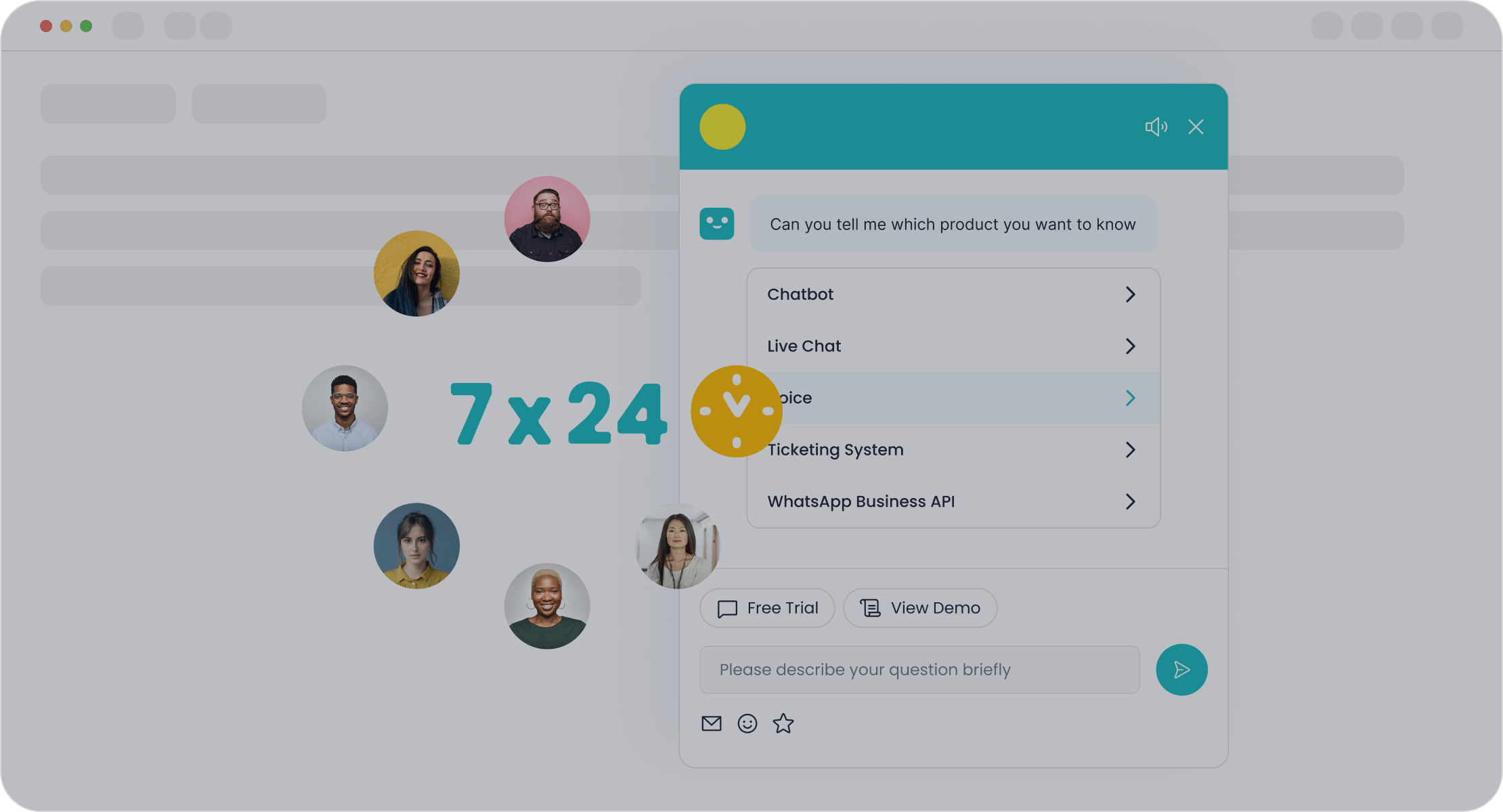
Sobot Chatbot: AI-Powered Customer Self-Service
When it comes to AI-powered self-service tools, Sobot’s Chatbot stands out as a game-changer. It’s designed to handle routine queries, guide you through troubleshooting, and even assist with complex tasks—all without needing human intervention. This chatbot operates 24/7, ensuring you always have access to support, no matter the time.
What makes it so effective? Its performance metrics speak for themselves:
| Metric | Value |
|---|---|
| Accuracy of responses | Over 80% |
| Customer satisfaction rate | Over 95% |
| Self-service question resolution | 22.2% |
| Customer satisfaction score (CSAT) | 97% |
| Problem resolution rate | 85% |
| Overall customer happiness | 99% |

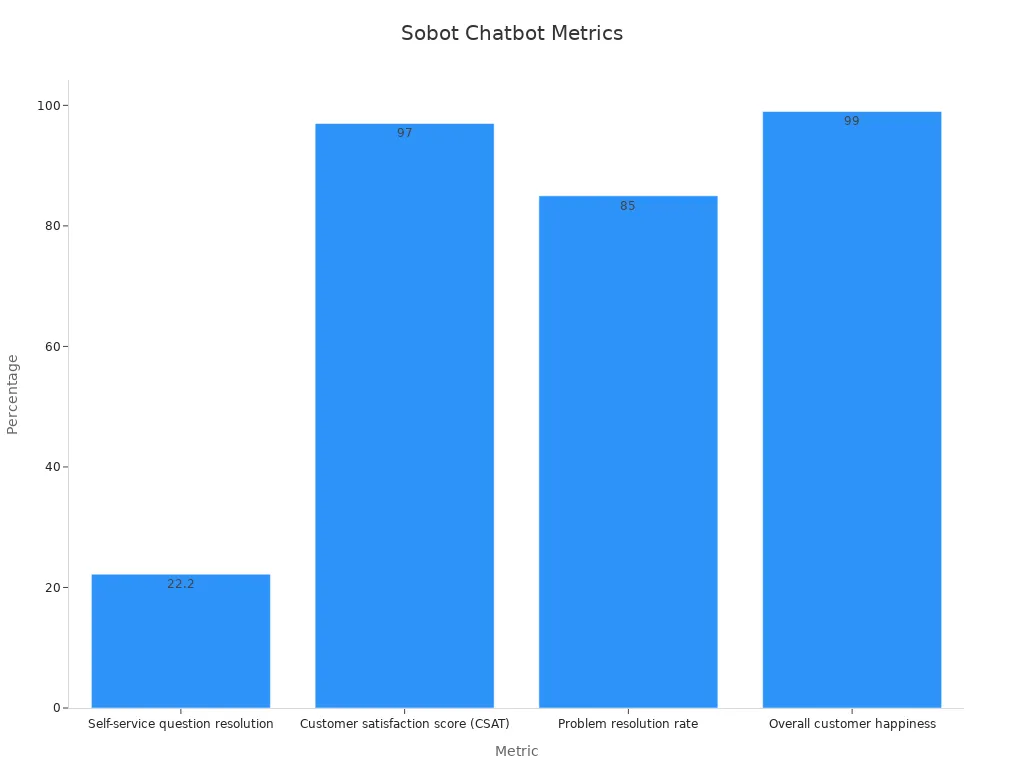
Sobot’s Chatbot doesn’t just answer questions—it empowers you to solve problems independently. Its multilingual capabilities and user-friendly interface make it accessible to everyone. Plus, it integrates seamlessly with platforms like WhatsApp and SMS, ensuring you can interact through your preferred channel.
Tip: If you’re looking for a tool that combines efficiency with personalization, Sobot’s Chatbot is worth exploring.
Self-Service Portals for Account Management
Self-service portals are another essential tool that simplifies account management. These platforms let you update your information, track orders, and resolve issues—all on your own. They’re available 24/7, so you don’t have to wait for business hours to get things done.
Here’s how they benefit both you and businesses:
| Benefit | Description |
|---|---|
| Reduced Operational Costs | Automating routine tasks lowers the need for staff intervention, significantly reducing costs. |
| 24/7 Availability | Customers can resolve issues independently, increasing satisfaction and loyalty. |
| Enhanced Data Collection | Businesses can gather valuable data on user behavior to improve services and experiences. |
| Faster Resolution Times | Self-service portals help reduce the time taken to resolve customer inquiries, enhancing efficiency. |
These portals are especially useful for industries like retail and financial services, where quick access to account details is crucial. Sobot’s omnichannel solution integrates self-service portals with other communication channels, creating a unified experience. Whether you’re checking your order status or updating your profile, the process feels seamless and efficient.
Knowledge Bases and FAQ Systems
Knowledge bases and FAQ systems are the backbone of self-service tools. They provide detailed answers to common questions, helping you find solutions without contacting support. These systems are perfect for first-contact resolutions, where you can get the information you need on your first try.
Here’s what makes them effective:
- First Contact Resolution Rate: Users find answers quickly, boosting confidence and reducing support costs.
- Average Resolution Time: Knowledge bases deliver answers fast, balancing speed with quality.
- Self-Service Success Rate: A high success rate shows how user-friendly and empowering these tools are.
The impact of a well-designed knowledge base goes beyond customer satisfaction. It also helps support teams by providing quick access to information, speeding up ticket resolution times. Sobot’s AI-driven knowledge base takes this a step further by automating content updates, ensuring the information stays accurate and relevant.
Note: If you’re looking for a way to enhance your self-service experience, a robust knowledge base is a must-have.
Interactive Voice Response (IVR) Systems
Have you ever called a company and been greeted by an automated voice that guides you through options? That’s an Interactive Voice Response (IVR) system in action. These systems are one of the most effective self-service tools for managing customer inquiries over the phone. They let you navigate menus, check account details, or even resolve issues—all without needing to speak to a live agent.
IVR systems are a win-win for both you and businesses. For you, they save time by providing instant access to information. For businesses, they reduce the workload on customer service teams. In fact, a case study showed that an IVR system handled 50% of the total annual call volume for a company. That’s half the calls managed without human intervention! This kind of efficiency not only cuts costs but also ensures faster service for you.
Modern IVR systems are smarter than ever. They use AI to understand natural language, so you don’t have to press endless buttons. Instead, you can simply say what you need, and the system will guide you. Sobot’s IVR solution takes this a step further by integrating with its omnichannel platform. This means your interactions through IVR can seamlessly connect with other channels like live chat or email, creating a smooth experience.
These systems also collect valuable data. For example, they track common customer queries, helping businesses improve their services. When paired with other self-service tools like chatbots or knowledge bases, IVR systems create a powerful ecosystem for customer support. Whether you’re checking your bank balance or troubleshooting a product issue, these tools make the process quick and hassle-free.
So, the next time you hear that automated voice, remember—it’s there to make your life easier.
Implementing Self-Service Solutions Effectively
Identifying Customer Needs and Preferences
Understanding what your customers want is the first step in creating a successful self-service experience. When you know their preferences, you can design tools that truly meet their expectations. For instance, research shows that 69% of customers prefer solving issues on their own before reaching out to support. This highlights the growing demand for customer self-service options.
To identify these needs, start by analyzing customer behavior. What questions do they ask most often? Which channels do they prefer? Tools like Sobot’s omnichannel solution can help you gather this data by integrating interactions across platforms. This way, you can tailor your self-service portal to provide the answers they’re looking for.
The shift toward digital engagement also emphasizes the importance of shaping a better support experience. By enabling customers to troubleshoot independently, you not only enhance their autonomy but also build loyalty. Satisfied customers are more likely to return and recommend your services, making this step crucial for long-term success.
Choosing the Right Self-Service Options
Not all self-service tools are created equal. Choosing the right ones depends on your customer segments and business goals. For example, high-touch customers may benefit from personalized tools like interactive chatbots, while low-touch customers might prefer scalable options like knowledge bases.
Here’s a quick comparison to guide your decision:
| Aspect | High Touch | Low Touch |
|---|---|---|
| Cost | High | Reduced |
| Scalability | Limited | High |
| Personalization | Strong | Moderate |
| Efficiency | Variable | High |
| Customer Experience | Highly personalized | Consistent and reliable |
Sobot’s AI Chatbot is a great example of a versatile self-service tool. It offers 24/7 support, handles routine queries, and integrates seamlessly with platforms like WhatsApp. Whether your customers need quick answers or personalized guidance, this chatbot adapts to their needs, ensuring accessibility and satisfaction.
Ensuring a User-Friendly Experience
A user-friendly self-service portal is essential for success. If your tools are hard to navigate, customers won’t use them. Usability studies suggest that task-based benchmarking, where users perform real tasks on the interface, is the best way to ensure your platform is intuitive.
Here’s what you should focus on:
- Simplicity: Keep the design clean and straightforward. Customers should find what they need without confusion.
- Accessibility: Ensure your tools work across devices and platforms. Sobot’s mobile-first design is a great example of this.
- Feedback Mechanisms: Allow users to share their thoughts. This helps you improve the experience over time.
By prioritizing these elements, you make it easier for customers to help themselves. This not only boosts satisfaction but also reduces the workload on your support team. A well-designed self-service portal doesn’t just solve problems—it creates a seamless and enjoyable experience for everyone.
Monitoring and Optimizing Performance
Monitoring and optimizing your self-service portal is essential to ensure it meets customer expectations. Think of it as fine-tuning a machine—regular checks and adjustments keep everything running smoothly. But how do you do it effectively? Let’s break it down.
Start by analyzing customer interactions. Tools like Google Analytics can help you track how users engage with your self-service tools. Are they finding what they need? Are there pages they frequently visit but leave without answers? These insights reveal what’s working and what needs improvement.
You can also collect QA data to identify trends in customer queries. For example, if many users ask the same question, it might mean your FAQ section needs an update. Sobot’s self-service portal makes this process easier by integrating analytics directly into its platform. This way, you can spot patterns and adjust your resources accordingly.
Here are some proven techniques to optimize performance:
- Use tools like Zendesk or Freshdesk to manage and analyze customer support data.
- Update FAQs based on real customer feedback.
- Streamline navigation to make it easier for users to find answers.
Customer satisfaction scores are another goldmine of information. If scores drop, it’s a sign something isn’t right. Maybe your self-service options aren’t intuitive enough, or perhaps users need more detailed guides. Regularly reviewing these metrics ensures your self-service tools stay effective.
Finally, don’t forget to test your updates. A/B testing can show you which changes resonate most with users. For instance, tweaking the layout of your self-service portal might reduce bounce rates. By continuously monitoring and optimizing, you create a system that evolves with your customers’ needs.
Tip: Make optimization a habit, not a one-time task. Tools like Sobot’s AI Chatbot and omnichannel solutions provide built-in analytics to help you stay ahead.
Self-service solutions are transforming how customers and businesses interact. For customers, they offer independence, faster resolutions, and 24/7 accessibility. Imagine solving a problem at midnight without waiting for support. That’s the power of tools like Sobot Chatbot, which operates around the clock to enhance customer satisfaction.
For businesses, these solutions reduce costs, improve efficiency, and strengthen customer relationships. Sobot’s AI-powered tools, for instance, help businesses save up to 50% on staffing costs while boosting productivity by 70%. These benefits make self-service solutions a strategic investment in customer satisfaction and operational excellence.
Adopting tools like Sobot Chatbot isn’t just about staying competitive—it’s about creating memorable experiences that keep customers coming back. Are you ready to empower your customers and transform your business?
FAQ
What are self-service solutions, and why are they important?
Self-service solutions let you solve problems or complete tasks without needing help from a live agent. They’re important because they save time, reduce frustration, and give you control. For example, tools like Sobot’s AI Chatbot provide 24/7 support, ensuring you get answers whenever you need them.
How do self-service tools improve customer satisfaction?
Self-service tools empower you to find solutions quickly and independently. This reduces wait times and frustration. For instance, Sobot’s omnichannel solution ensures seamless support across platforms, making your experience smoother and more enjoyable. Studies show 86% of customers prefer businesses that offer self-service options.
Can self-service solutions save businesses money?
Absolutely! By automating repetitive tasks, businesses cut costs on staffing and resources. Sobot’s AI Chatbot, for example, saves up to 50% on agent costs while boosting productivity by 70%. This makes self-service solutions a smart investment for both efficiency and customer satisfaction.
Are self-service tools easy to use?
Yes, most self-service tools are designed to be user-friendly. Sobot’s AI Chatbot, for example, uses a no-coding-required interface, so businesses can set it up easily. For you, the intuitive design ensures you can navigate and find answers without any hassle.
What industries benefit most from self-service solutions?
Industries like retail, financial services, and gaming see huge benefits. For example, OPPO used Sobot’s chatbot to handle 83% of customer queries, achieving a 94% positive feedback rate. Self-service tools work across sectors to improve efficiency and customer satisfaction.
Tip: Explore tools like Sobot’s AI Chatbot to see how self-service solutions can transform your experience or business operations.
See Also
Enhancing Efficiency With AI-Driven Customer Service Solutions
Around-The-Clock Live Chat Enhances Business Performance
Chatbots Elevate Customer Satisfaction In E-Commerce Platforms
Transforming Support With AI-Powered Customer Service Agents
